How to Fix a Slipping Treadmill Belt?
Author:
Reviewed by:
(21 years of Oly Lifting experience)
Unlock your full potential by engaging with our experts and community! Have questions about your fitness journey or looking for expert advice on weightlifting techniques? Don’t hesitate — leave a comment below and Ihor Shymechko will provide a personalized answer and insights to help you reach your goals.
Torokhtiy is reader-supported. Some links are affiliate links, and we may earn a commission at no extra cost to you. See our disclosure page for details.
Do you feel that there are some issues with your treadmill while running? It’s likely the running belt is slipping or wearing off. You’ll find yourself asking how to fix a slipping treadmill belt.
If you don’t solve the issue the treadmill motor will work harder to increase the pressure to keep the treadmill operating. Fix the malfunction to avoid it affecting the overall machine performance and hindering your training regime.
There are effective ways for how to fix a slipping treadmill belt easily: adjust the belt tension by twisting the bolts, use a silicone lubricant, or replace it with a new one.
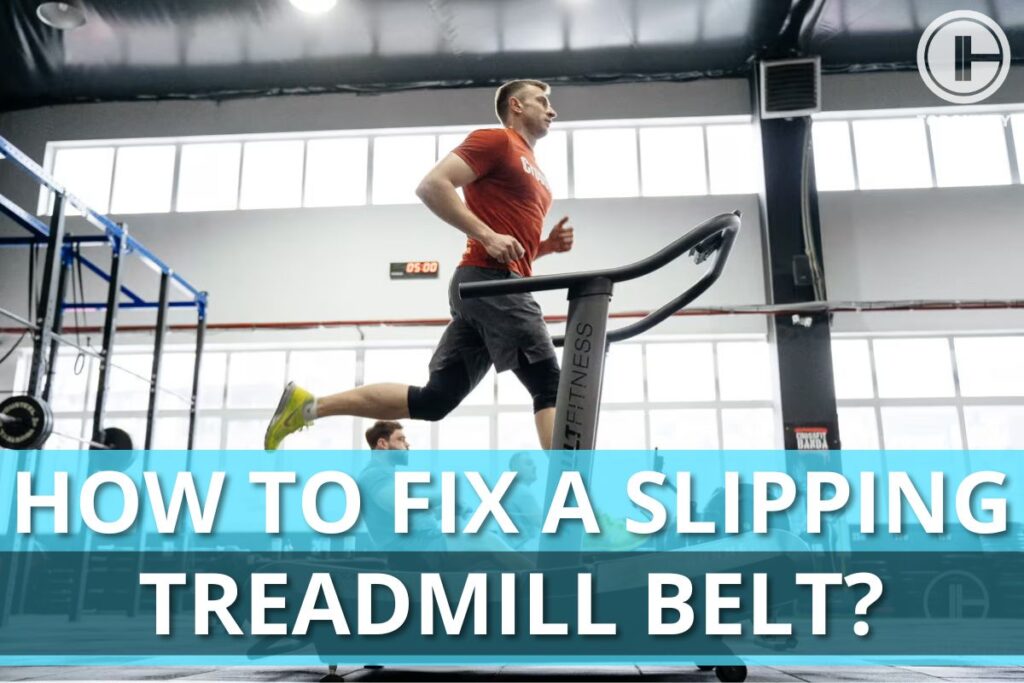
Understanding the Causes of a Slipping Treadmill Belt
A treadmill is one of the most popular cardio trainers people choose for their home gyms. It helps to stay fit, develop strength, and pump up the cardiovascular system. You can use this piece of equipment at any time and for any duration.
However, because of regular usage and absence of maintenance, there can occur numerous issues with treadmill operation that may hinder your workout and simply lead to occasional tripping and falls.
The vast majority of treadmill users complain about problems with a treadmill belt, namely its slippage. When they face such an issue, they start googling ‘Why is my treadmill slipping?’ hoping to find a quick fix.
It’s important to treat this problem at once and not delay repair as it can result in serious falls and injuries during use. Let’s define 4 factors that can cause belt slippage:
1. Lack of Lubrication
Manufacturers advise lubricating the treadmill belt before the first training as it guarantees smooth performance without sudden stops. The treadmill construction utilizes the belt that runs over from the treadmill deck with rollers.
The friction between the belt, deck, and rollers should be reduced with the help of the proper lubricant. It’s recommended to use a silicone-based lubricant that prevents the treadmill belt slipping.
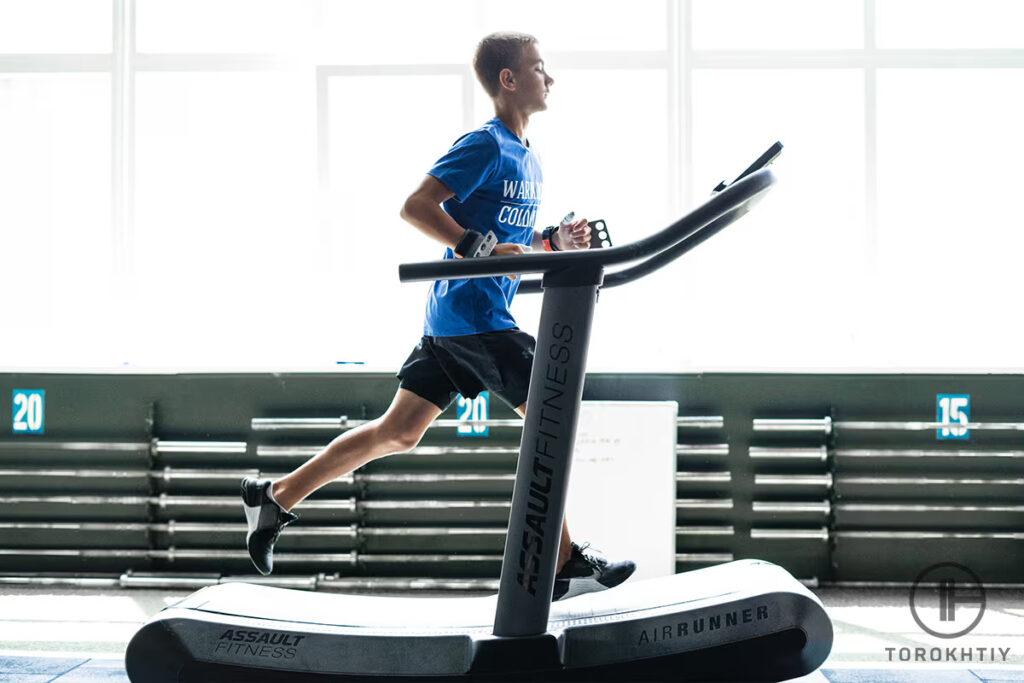
2. The Drive Belt Wears Off
When you hop on a treadmill and the belt stops, but the motor is still in action, it means you need to fix the front roller. However, if the roller and pulley don’t work, it’s a sign of the belt becoming loose.
To solve the issue of belt shaking and fluctuation, it’s better to change the drive belt to avoid extra tension in the motor. Don’t try to tighten the belt because you can over-tighten it and the motor will burn out. If you can’t replace the belt, then you’d better use a belt dressing spray that won’t last for a long time, it’s a temporary remedy.
3. Losing the Grip on the Front Roller’s Pulley
The pulley is important in distributing the weight on the belt and directing it to complete the operating cycle. If your treadmill slips when running, there’s a misalignment between the pulley and the front roller.
To define in advance that a roller has lost its grip, you can attach a tape on the pulley you can see when a treadmill is switched off, and attach the corresponding piece on the roller tube.
Switch on the treadmill and see whether the pulley and drive belt still move. If the front roller and the walking belt don’t work, that means the pulley’s grip is weak.
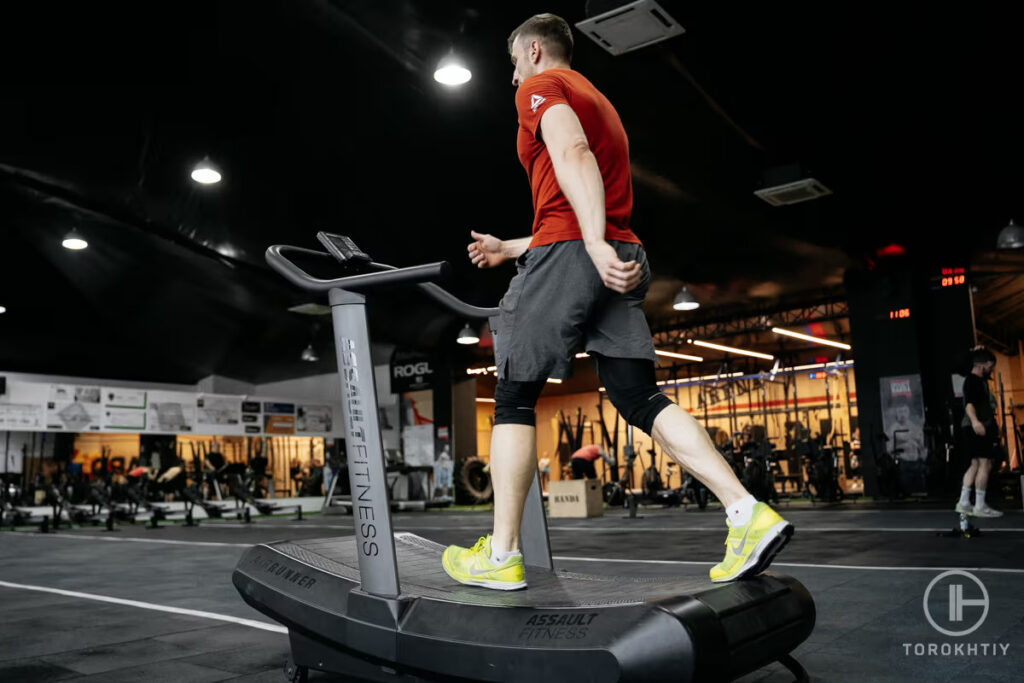
4. The Walking Belt Becomes Loose
Another reason why the treadmill feels like it’s slipping is the running belt is too loose and the tension on it increased. The belt can stretch over time with constant use and age. In this case, you can try tightening it up and stop the drive belt slippage.
All in all, despite tightening the belt being the easiest way to solve this problem, we recommend you replace it. Overtightening the belt can lead to the damage of expensive components.
In any case, you can call a technician to fix this malfunction, or visit an authorized service center. Do not try to do it on your own if you can’t succeed to do the repair correctly following the video guide.
Tips From the Champ
If your treadmill slips when running, there’s a misalignment between the pulley and the front roller. To define in advance that a roller has lost its grip, you can attach a tape on the pulley you can see when a treadmill is switched off, and attach the corresponding piece on the roller tube.
Olympic Weightlifting Champion
Inspecting and Replacing a Worn-Out Belt
If something seems strange to you in the treadmill operation, check its performance and belt malfunction. You can run slowly and see whether the edges are curled up or frayed.
Also, look at the belt seam, which is a vulnerable area, to see whether it’s not ripped or frayed as well. If you found some issues with the drive system, use these recommendations on how to fix a slipping treadmill belt.
Unplug the treadmill and lift the belt up: check the give, it should be 3″- 4″. If there’s more give, you need to tighten the belt. To do it take an Allen wrench and turn the bolts clockwise at the deck back.
However, if the issue is more serious and you need to install a new belt, then follow the instructions below. Also, don’t neglect the manufacturers’ advice as not all treadmills are the same and could require specific solutions for this problem.
1. Remove the Old Belt:
- Unplug the treadmill and unscrew the bolts fixing the motor hood. Locate the front and rear roller bolts and mark their positions with a marker. Then loosen the running belt.
- Remove the adjustment bolt at the front roller (if your treadmill has bolts and staples) and pop the right-hand side’s plastic deck with a flathead screwdriver. If a treadmill is of higher quality, it should have straddle covers with an under-mount or a slide-mount.
- Separate the 3 or 4 deck bolts from the treadmill and remove the rear roller screws with the plastic end caps and roller. The final step is to remove the belt which requires two people to do it easily: one lifts the deck by holding the front roller close to the pulley, and the other removes the belt.

2. Installing a New Treadmill Belt
Before setting up a new belt, check whether the deck is of good quality and there’s no wax or dirt. This process also requires two people: one lifts the deck and holds the front roller, while the other slides a new belt over the board. Once you install it, lift the deck and check underneath whether the belt is centered.
Then, you can replace the rear roller and end caps. Screw the rear roller bolts, but do not tighten until you fasten the deck bolts. Next, secure the front bolts, and make sure that you returned the bolt to the position you marked at the beginning.
Refit the belt by turning the adjustment bolts clockwise. You can set the belt’s tension: if it’s okay, you’ll be able to lift it 2″- 3″ inches at the belt’s center.
Testing and Fine-Tuning the Belt Fix
After you set a new treadmill belt, you should check whether everything works well. Start by launching the machine anew. Keep in mind these hints for fine-tuning the belt to minimize occasional falls and tripping when the treadmill catches when running.
1. Run a Treadmill and Check the Belt Tightness
Start the treadmill at a speed of 2 mph: walk a few steps to check the belt doesn’t slip. If it needs adjustment, turn the left and right adjustment bolts. To center the belt, increase the speed and use the left side adjustment bolt to fix the position. If everything is alright, put the motor hood back.
2. Lubricate Before Use
Don’t forget to lubricate the belt. Use a cloth and spread the lubricant evenly between the deck and belt. Move the cloth back and forth along the belt length. Walk on the treadmill at a slow pace, so the lubricant will create a coating.
3. Don’t Neglect Cleaning
This point is highly important if you prefer vigorous running sessions to push yourself hard. You can sweat a lot during such intensive training, so it’s impossible to protect the treadmill belt from it. Use some soap solution without chemicals, so as not to spoil the surface.
4. Use It Properly
Don’t overload a treadmill with tough high-intensity running sessions. Treat it respectively to prolong its use. Vigorous running workouts are likely to lead to the treadmill belt slipping at higher speeds and starting to wear off sooner. Don’t forget to check its condition at least every three months.
Treadmill We Recommend
ProForm Carbon TLX
- Dimensions: 35.1’’W x 74.3’’D x 59.1’’H
- Display size: 7’’
- App: iFit
- Product weight: 249 lbs
- Weight capacity: 300 lbs
- Running deck size: 20’’x60’’
- Speed range: 0-12 mph
- Incline/decline options: 0-12%
- Additional features: ProShox cushioning, folding design
- Warranty: 10-year frame, 1-year parts, 1-year labor
Get engaged in the interactive running sessions with the ProForm Carbon TLX treadmill that brings unlimited opportunities to upgrade your training routine and performance.
This smart treadmill is equipped with a powerful 3.0 CHP motor and a spacious 20’’ x 60’’ running belt, so you’ll adjust it to any running tempo. You can accelerate up to 12 mph, the machine will treat your knees mildly due to the cushioning belt.
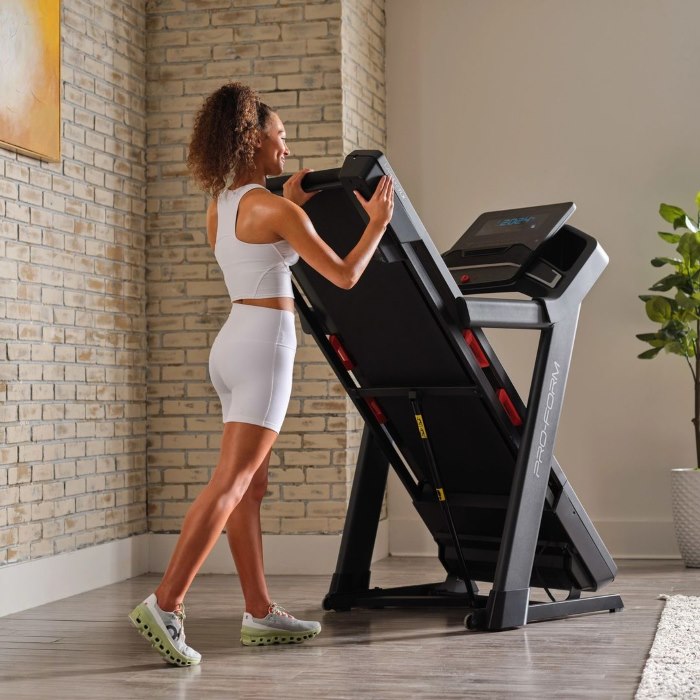
Moreover, this is a highly interactive piece of equipment thanks to its connectivity with Bluetooth and iFit application. You’ll get a 30-day free subscription including numerous training opportunities: online groups classes, trainer-led workouts, and personalized sessions alike.
FAQ
Is There A Way To Tighten The Belt On A Treadmill?
The easy way to tighten the belt is to adjust the rear roller tension bolt that goes through the back of the rear roller. It moves the treadmill belt and tightens it up with an Allen wrench by making a 1/4 turn clockwise.
Why Does My Treadmill Jerk When I Run?
If your treadmill belt shakes and excessive movements occur when you run on it, that means the running belt:
- is too loose, or too tightened alike;
- isn’t centered properly;
- needs to be lubricated.
Conclusion
Having observed the main reasons and step-by-step solutions for solving the issue, we hope you’ll resolve your queries about how to fix a slipping treadmill belt in several steps without calling a technician.
With regular inspection of the treadmill and timely repair of the malfunctions, you’ll manage to prolong its performance and it won’t affect your training progress. Ask a certified service center to treat your ill-fitting belt to prevent its wear or even machine damage.
Also read:
- How to Clean Treadmill Belt
- How Many Calories Do You Burn on a Treadmill
- How to Lose Weight on a Treadmill
- What Muscles Does Treadmill Work
- How to Adjust Treadmill Belt
- Best Curved Treadmill
- Under Desk Treadmills Guide
References:
- Changes in heart rate variability with respect to exercise intensity and time during treadmill running // Ncbi: https://www.ncbi.nlm.nih.gov/pmc/articles/PMC6154948/.
- The effects of unexpected mechanical perturbations during treadmill walking on spatiotemporal gait parameters, and the dynamic stability measures by which to quantify postural response // Ncbi: https://www.ncbi.nlm.nih.gov/pmc/articles/PMC5908091/.
- The effects of unexpected mechanical perturbations during treadmill walking on spatiotemporal gait parameters, and the dynamic stability measures by which to quantify postural response // Sunnyhealthfitness: https://support.sunnyhealthfitness.com/hc/en-us/articles/4409104059035-How-To-Lubricate-Your-Treadmill.
- Effects of Transmission Belt Looseness on Electrical and Mechanical Measurements of an Induction Motor // Oatao: https://oatao.univ-toulouse.fr/16035/7/fournier_16035.pdf.
- Treadmill training and body weight support for walking after stroke // Ncbi: https://www.ncbi.nlm.nih.gov/pmc/articles/PMC6483714/.
- Photos are made by Torokhtiy Media team.
Why Trust Us?
With over 20 years in Olympic weightlifting, strength training, nutrition coaching, and general fitness our team does its best to provide the audience with ultimate support and meet the needs and requirements of advanced athletes and professional lifters, as well as people who strive to open new opportunities and develop their physical capabilities with us.
By trusting the recommendations of our certified experts in coaching, nutrition, and sports training programming, as well as scientific consultants, and physiotherapists, we provide you with thorough, well-considered, and scientifically proven content. All the information given in the articles concerning workout programming, separate exercises, and athletic performance, in general, is based on verified data.
The product testing process is described in more detail here.
Author: Ihor Shymechko
Pro Olympic Weightlifter, Coach
Best Results: Snatch – 208 kg,
C&J – 240 kg
Ihor has been a professional weightlifter since 1996, boasting over two decades of competition experience. His notable achievements include clinching the European Championship in 2009 and securing a silver medal in the 105kg division at the Senior World Championships in 2011. Ihor represented his country in the 2008, 2012, and 2016 Summer Olympics. After retiring from competitive weightlifting, he transitioned to coaching, leveraging his vast experience to guide athletes who now compete on both national and international stages.
Reviewed by: Oleksiy Torokhtiy
Olympic Weightlifting Champion, PhD in Sport Science
Best Results: Snatch – 200 kg,
C&J – 240 kg
Oleksiy Torokhtiy is a professional athlete boasting 20 years of experience in Olympic weightlifting. With multiple European and World titles under his belt, he has showcased his prowess in two Olympic Games (Beijing 2008 and London 2012). Upon concluding his illustrious career, Oleksiy dedicated himself to coaching. By 2022, he had conducted over 200 weightlifting seminars worldwide. He is the visionary behind an international sportswear and accessories brand known for its motto, “Warm Body Cold Mind.” Additionally, he is an esteemed author and the creator of a series of training programs and eBooks.





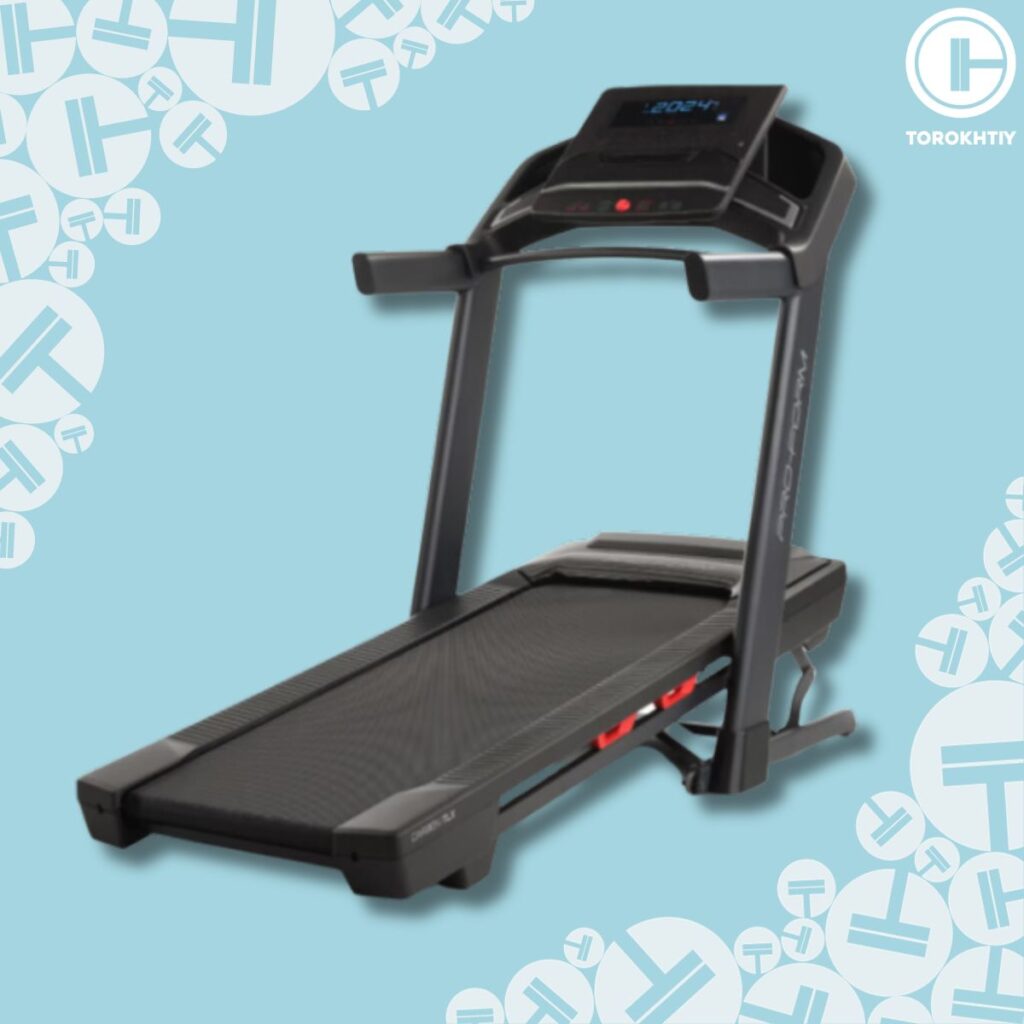
Still have questions after reading our article? Unlock your full potential by engaging with our experts and community! Don’t hesitate — leave a comment below and Ihor Shymechko will provide a personalized answer and insights to help you reach your goals.